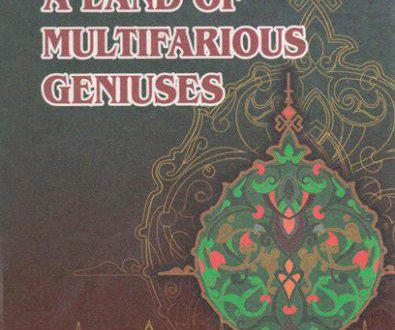Depending on the conditions of life and the style of their scientific heritage, the lawyers of Central Asia made a great service and unforgettable contribution to the development of the Islamic law, especially to the development of the Hanafian order and left immortal works for the future generation. The most precious among the legal works “Al-Hidaya” written by Imam Marghinani deserves .1 huge theoretical and practical importance thanks to its perfectness in form and content as well as its comparative study of the 1 lanafian order with other orders of the Sunnah branch.
Since the 8th century, “Al-Hidaya” has been taught nearly in all d! the madrasahs and Islamic higher educational institutions as well as in the legal schools of the Islamic world as one of the most effective and important manuals. The lawyers and scholars have written more than 60 commentaries on the text and abbreviation of die book. It is well known that this book serves as an influential source in the spread of the Hanafian order. It pleases us that the English, Russian and Persian translations of the book are widely used by Western scholars in the process of studying and investigating the essence of the Hanafian order.
Imam Burhan ad-din Abu-l-Hasan Ali ibn Abu Bakr ibn Abduljalil al-Fergani al-Marghinani was born in 1123 in Rishtan district of Marghinan and died in 1197 in Samarkand.
Marghinani was educated in his own family and taught by the l.unous and talented specialists of the Islamic sciences. Thanks to his rare ability and steady activity, he reached the highest level of status in the field of the Hanafian order. He turned into a great lawyer and “mujtahid” and this status earned him the highest title iheikh ul-Islam”.
Clearly understanding the importance of law and legal sciences for the future life, Burhan ad-din al-Marghinani educated his children, close friends and students in this field of knowledge. Among them we can mention the following people:
- His son Imad ad-din ibn Burhan ad-din al-Marghinani became a mature lawyer and had good ability in poetry.
- Umar Nizam ad-din ibn Burhan ad-din al-Fergani. According to the statement of “Islamic encyclopaedia” and “Kashfu-z-zunun”, the books titled as “Al-Favaid” and “Javahiru-l-fiqh” belongs to his pen. A copy of the latter manuscript is preserved in the scientific library of the Institute of Oriental Studies in Tashkent named after Abu Rayhan Beruni under the code of P. 9533. The author is supposed to have collected the materials for his book from such authoritative and original sources as “Mukhtasaru-t-Tahavi”, “Mukhtasaru-l-Jassas”, “Khizanatu-l-fiqh” and compiled it under the principles of “Hidaya”.
- Muhammad Abulfath Jalal ad-din al-Fergani. A grandson of Burhan ad-din al-Marghinani. Abulfath Zayn ad-din Abdurahim ibn Imad ad-din al-Fergani lived in Samarkand and was engaged in the scientific activity. As the historical sources inform us, in 1253 he wrote a work under the title of “Al-Fusulu-l-imadiya” dealing with the legal offices in Samarkand.
Burhan ad-din al-Marghinani diligently studied knowledge and sciences. Consequently, he became a prominent lawyer in the Hanafian order. Such a big success was due to the following factors:
Firstly, he had a rare ability to study and sharp thought, and was the fan of the science of law. His intention to learn the subjects of his time led him to long scientific tri ps and provided him with the possibilities for mastering the secrets of law and other sciences of the Islamic teachings. At the beginning of his study, he learnt the essence of law from his father and later he was taught by Imam Bahauddin Ali ibn Muhammad ibn Ismail al-Asbijabi (died in 535).
His famous teachers and masters were the following estimated experts of law:
- Abdulaziz Marghinani;
- Fakhr ad-din Abulmahafir Hasan ibn Mansur Uzgandi (1196), the author of the book “Fatavasi Qazikhan” (Rules of Qazikhan);
- Najm ad-din Abuhafs Muhammad ibn Ahmad an-Nasafi (1143), the author of the book “Al-aqaidu-n-Nasafia” and around a hundred works on the Muslim law;
- As-Sadru-sh-shahid Hisam ad-din Umar ibn Abdulaziz ibn Umar ibn Moza (1140);
- Abu Amr Usman ibn Ali al-Baykandi, the follower and disciple of as-Sarakhsi.
 Imom Buxoriy xalqaro ilmiy-tadqiqot markazi bukhari.uz
Imom Buxoriy xalqaro ilmiy-tadqiqot markazi bukhari.uz










